The Relationship Makers Guide
5 steps to becoming a Relationship Maker

Agree the destination
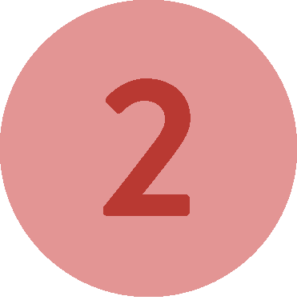
Know where to start

Identify your priorities

Spot the breakers

Find the makers
Our 5 step guide helps you put in place the conditions for relationships to flourish. Anyone, anywhere can use the guide to help them on their journey to becoming a Relationship Maker. You might want to work through the guide with a partner or in a small group to get the ideas flowing.

Agree the destination
Why are you doing this?
The benefits of strong relationships are wide-ranging, but nailing down what you want to achieve by investing in relationships helps provide focus.
ASK:
- What value do you hope to generate?
- For whom?
Some thought starters….
The value of relationships
Strong relationships are not just a nice to have, a fluffy extra in an outstanding school, an effective criminal justice system, a successful health service, a flourishing business or a just democracy. They are the making of it all.
Numerous benefits are realised by fostering and nurturing relationships. For more concrete examples, take a look at our bank of case studies.
The 4 point matrix
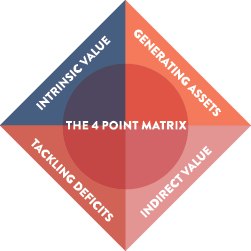
Investing in your relationships can both generate assets (such as new economic activity) and tackle deficits (e.g. reducing excessive costs). Relationships can act as an end in themselves, delivering direct value (such as reduced loneliness), or as a means to an end, delivering indirect value (such as improving the efficiency of healthcare).
Some inspiration…
Take a look at our blog ‘How We Live Together‘ which considers the state of our relationships in 2020 and lays out a vision for building a better society by building better relationships.
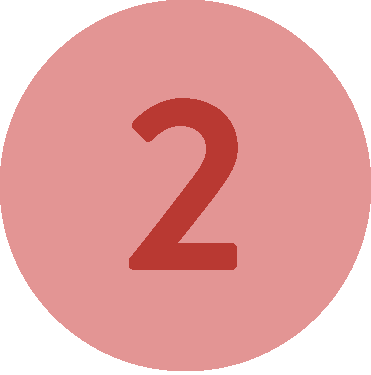
Know where to start
Which relationships?
In any place, many different relationships exist. Honing in on the relationships which matter most in reaching your destination makes the task easier.
ASK which relationships …
- … are most central to your aim?
- … have most potential impact?
- … do you have most agency to influence?
- … are currently the weakest?
Some thought starters….
Common types of relationships

In any place, many different relationships exist between different types of stakeholders. A school, for example, will have relationships with parents and students (users), staff (employees) and the wider community. Relationships also exist within stakeholder groups. Parents and students, for instance, will have relationships with other parents and students, and the school as an organisation will have relationships with other organisations, such as schools in other areas and exam bodies. Whilst all these relationships are likely to play an important role in the functioning of a place, choosing one type of relationship to focus on provides a useful starting point.
Circles of support
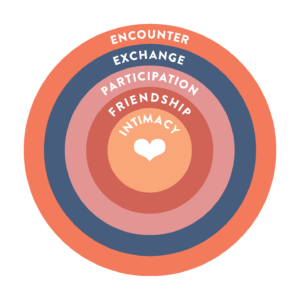
When thinking through these questions – particularly in relation to a specific user group – the Circles of Support model can be useful. The model originated in Canada, and spread to the UK in the 1980s. It helps segment the different types of relationships people have and encourages reflection on the different functions and characteristics of different relationships as well as how a relationship might migrate from one segment to another. Though the boundaries are porous, people likely experience relationships differently depending on which segment they fall within.
Some inspiration…
Mapping your relationships can help you to hone in on those that are most important and identify gaps in your network. Numerous network mapping tools exist which can help you to do this. We like Kumu.

Identify priorities
What does a good relationship look like?
Relationships are idiosyncratic and context-dependent, but strong relationships all share some common characteristics.
ASK:
What does a good relationship look like in your place?
A thought starter….
Characteristics of a good relationship
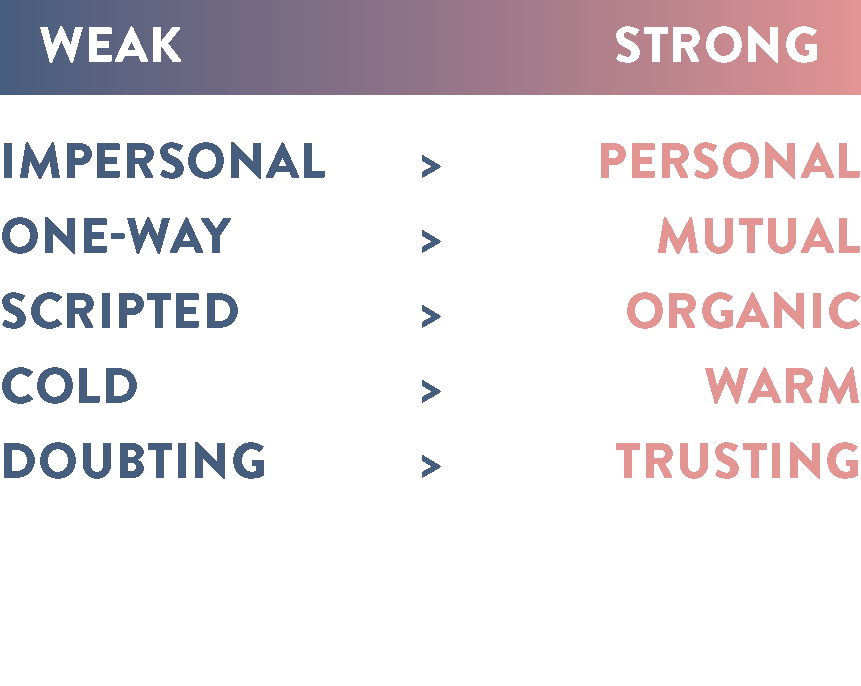
We believe that strong relationships should share some fundamental characteristics. The exact balance of these characteristics will vary depending on context and the relationship at play. A good relationship between a GP and a patient, for instance, will be different to a good relationship between friends. A good relationship between a mental health support worker and a service user might be more reliant on trust than on mutuality, even if both are important. A strong teacher-student relationship is likely to be somewhat scripted, in the form of lesson plans, but still be personalised and trusting. Thinking through the nature of the relationships being nurtured is important in helping to think about how to create the conditions in which they can be improved.

Spot the breakers
What are the barriers?
Lots of things potentially get in the way of developing and maintaining strong relationships. Identifying the breakers is the first step in addressing them.
ASK:
What’s stopping you from having great relationships in your place?
A thought starter….
Common barriers to being relationship-centred
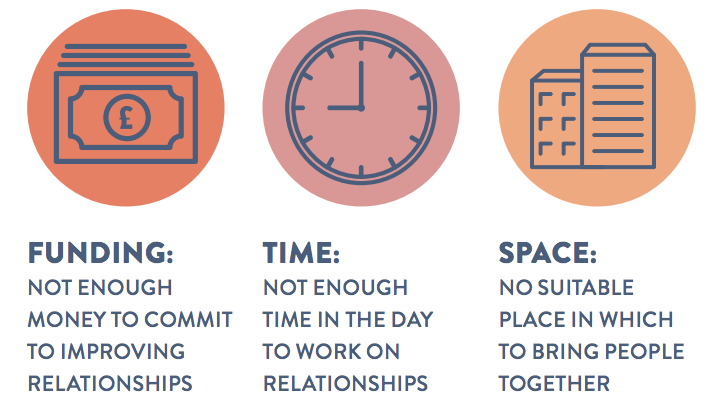
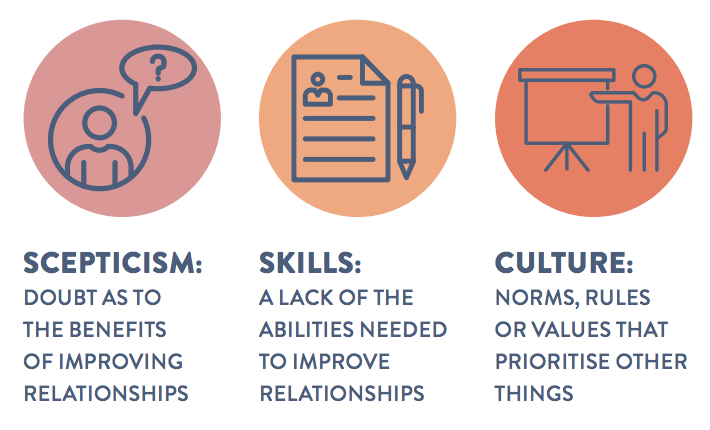
The barriers to improving a relationship will vary, but some common issues crop up regularly. Connecting with others who are grappling with similar challenges can be useful and energising.

Find the makers
What are the enablers?
There are lots of things that help create the conditions for relationships to flourish.
ASK:
What can you do in your place to strengthen your relationships?
A thought starter….
Enablers of good relationships
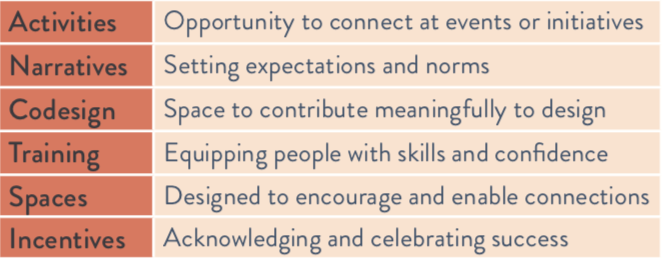
There are many things that can help build and sustain good relationships and lots of great examples of these enablers in action. Over the coming months we will be developing a hub of resources that make good practice examples more accessible and actionable. In the meantime, our bank of case studies offer inspiration on how to build and sustain meaningful relationships in a range of contexts.
